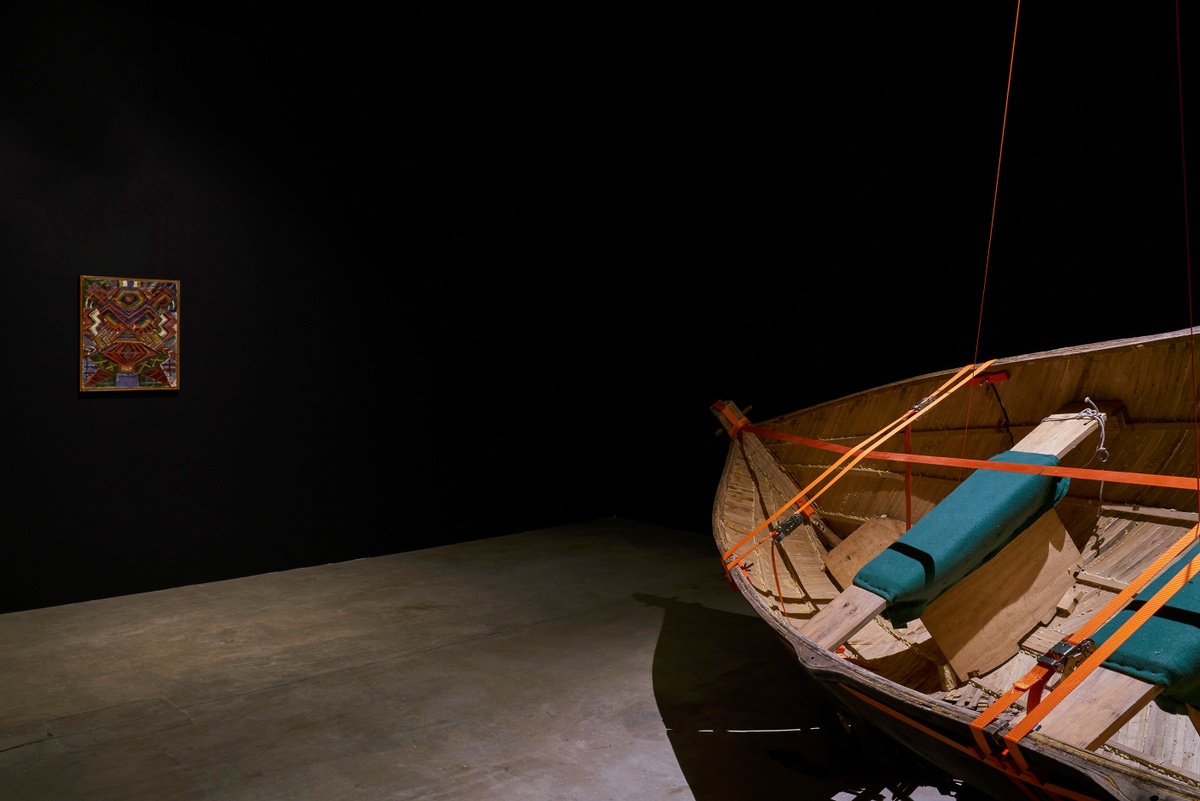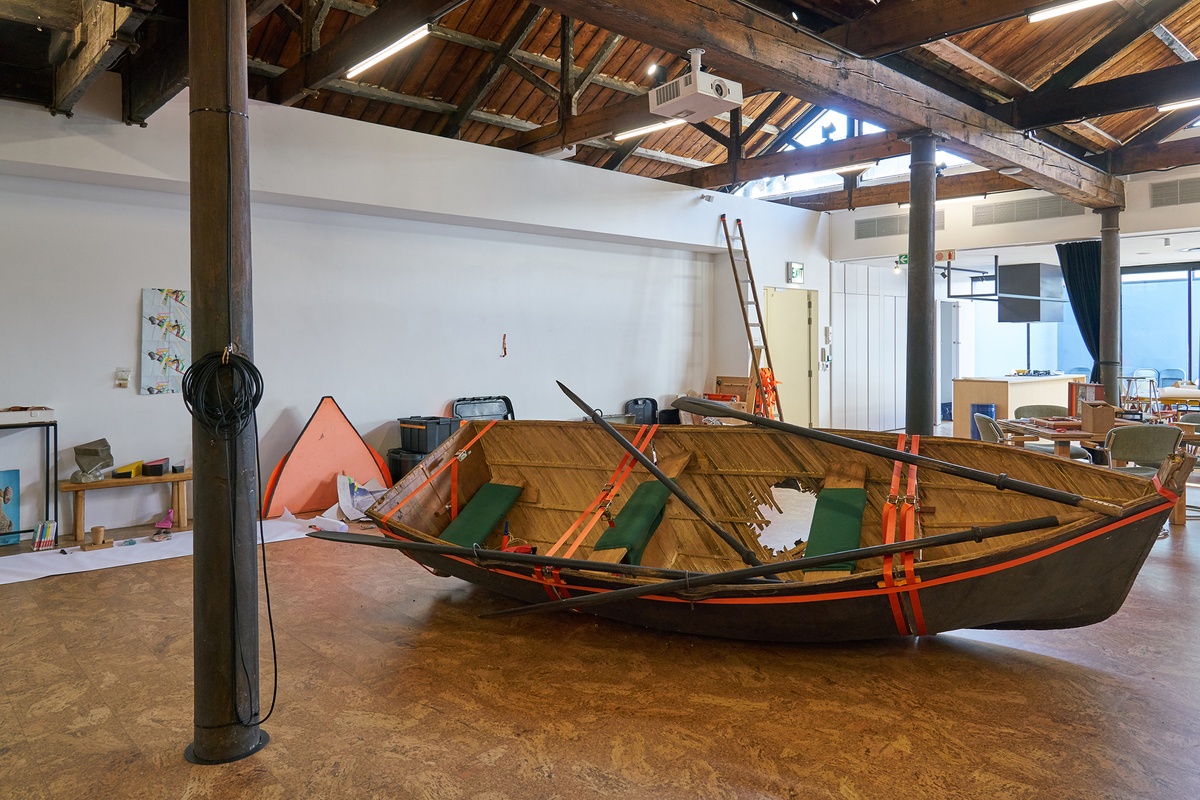Gimberg Nerf

On a May morning, Gimberg and Nerf left Blouberg Beach for Robben Island in a small rowing boat. They took with them only a few bottles of water, some snacks and a friend, the artist Barend de Wet. Setting out against the breakers, they rowed to the Island and back again. Or rather, this is what Gimberg and Nerf claim to have done, though they offered no explanation for their project and little evidence other than the boat itself. It was only a decade later that a film composed mainly of photographs was provided as document – proof of a journey, if not the journey. Beach (2019) debuted at A4 Arts Foundation’s exhibition Risk some eleven years after the event it captured. This posthumous offering followed Nerf’s residency at A4, during which both he and Gimberg revisited the late Gimberg Nerf’s archive. In a twist of fate – incidental yet intriguing – the artist Kathryn Smith, whom the ‘deceased’ had appointed as the executor of his estate, was later appointed senior curator at A4 Arts Foundation in 2020. This has little (if anything) to do with the perplexing personage of Gimberg Nerf. Or, then again, perhaps it does. While one might expect such evidence as Beach to be the closing clause on a project long considered an enigma, much is still left unanswered. With the artists’ “consistent refusal to spell out any sort of reasonable rationale for the project” – as writers Ryan van Huyssteen and francis burger suggest –
Gimberg and Nerf have essentially created a construct that simultaneously proves and disputes itself through direct and indirect self-reference; a puzzling mystery, a complicated scheme, something completely pointless.
In January 2011, an obituary for one Gimberg Nerf was published in The Star’s classified section. Gimberg Nerf – it read – Escape, mythology, archive, composite, invent, provoke, collaborate, believe. It signalled both the end of a project and the death of a fictive Facebook user, who expired shortly after acquiring his 666th friend. Douglas Gimberg and Christian Nerf’s collaboration had begun four years earlier with the guiding maxim ‘build a boat, grow a beard.’ Their shared works – which include the faux Facebook account, an Afrikaans translation of the Satanic Bible, and Carpentry 101 – all made for conceptually slippery content. The serious unseriousness of these projects resists facile explanation. But then even the nature of their collaboration was largely uncertain. “I’ve tried different angles,” critic Katherine Jacobs wrote, “reading it in terms of 'relational aesthetics', as a kind of Beuysian myth-making, as political satire or as a piece of absurdist literature, a joke or trick or stunt. Yet none of the possibilities seems to pin down quite what the duo are doing.” What they were and were not doing remains a matter of lasting intrigue. Though Gimberg Nerf is now long dead, Gimberg and Nerf continue to pursue independent careers as artists.




